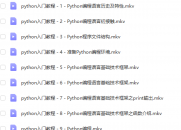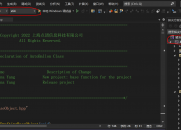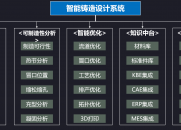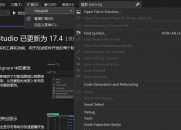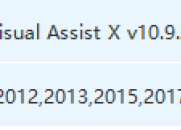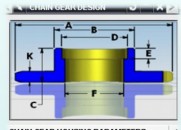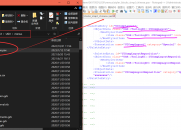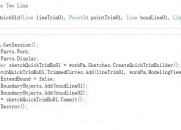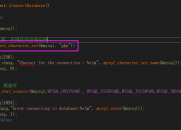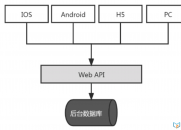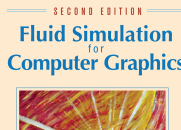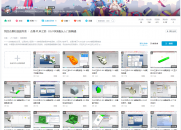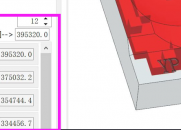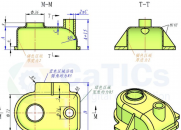|
|
 小新
发表于 2014-5-8 15:55:39
|阅读模式
小新
发表于 2014-5-8 15:55:39
|阅读模式
请使用QQ关联注册PLM之家,学习更多关于内容,更多精彩原创视频供你学习!
您需要 登录 才可以下载或查看,没有账号?注册

x
本帖最后由 小新 于 2014-5-8 16:10 编辑
! ^/ U: u! A# M2 U2 A9 C* E5 y4 B0 A% a- i3 E, z
录制装配过程的JA,经过对录制的代码进行简化删减后,如下,经编译后能够实现自动化装配。- Session *theSession = Session::GetSession();0 R" q, j+ G- s
- Part *workPart(theSession->Parts()->Work());0 v+ e: p* H5 L% b4 M
- Part *displayPart(theSession->Parts()->Display());
$ }8 N8 `8 D4 f- ^% e' ` -
( D% y/ X' m; s$ N! ]( \ - BasePart *basePart1;% J. ?9 E, r' [; D, @/ y; Z- i8 d X
- PartLoadStatus *partLoadStatus1;
. }$ y6 }& ]3 g' G* ? - basePart1 = theSession->Parts()->OpenBase("D:\\sy\\model4.prt", &partLoadStatus1);
w8 T1 _5 d$ e6 T0 N8 }: l - delete partLoadStatus1;' ~9 Z" N; K; k; o
-
. T) F/ a6 y( j- e* b$ t - Point3d basePoint1(0.0, 0.0, 0.0);
- H1 Q% B- e. F( k* @- p - Matrix3x3 orientation1;
0 }' F# Z* o; D1 l. U+ ^ - orientation1.Xx = 1.0; orientation1.Xy = 0.0; orientation1.Xz = 0.0;
8 y `3 _8 a% q4 r3 O/ N - orientation1.Yx = 0.0; orientation1.Yy = 1.0; orientation1.Yz = 0.0;5 t, _ t- m5 u& \# _
- orientation1.Zx = 0.0; orientation1.Zy = 0.0; orientation1.Zz = 1.0;6 M1 n, r/ v1 t
- PartLoadStatus *partLoadStatus2;
* ^+ U" B2 d) g0 o8 U; O! i% k z - Assemblies::Component *component1;4 s2 x% E0 t5 B( w& n9 D
- component1 = workPart->ComponentAssembly()->AddComponent("D:\\sy\\model4.prt", "MODEL", "MODEL4", basePoint1, orientation1, -1, &partLoadStatus2, true);//添加组件( b0 [/ N/ D# D+ v4 I2 J, Q0 P5 z
- delete partLoadStatus2;
* H' b7 p8 T5 L) I3 \& a# A -
7 v1 U3 \4 v& B2 V2 ?* G - BasePart *basePart2;
1 V! D& f' X5 v( c0 P2 m' w# Q2 K& S' l" \ - PartLoadStatus *partLoadStatus3;3 T4 ^3 \2 d/ ~7 x& o* j
- basePart2 = theSession->Parts()->OpenBase("D:\\sy\\model5.prt", &partLoadStatus3); 1 @) G1 q, h' G* o' B# u$ h
- delete partLoadStatus3;
' X6 s; J: p' E/ _# g. @ - 0 ~: M; c9 o; r$ I& c/ r* f- ^# w
- Point3d basePoint2(0.0, 0.0, 0.0);
" m: C2 t1 z% P) n: K% N0 ?7 O7 p - Matrix3x3 orientation2;- q; V! z& |3 @, Z2 M
- orientation2.Xx = 1.0; orientation2.Xy = 0.0; orientation2.Xz = 0.0;1 u3 H3 H3 G- S
- orientation2.Yx = 0.0; orientation2.Yy = 1.0; orientation2.Yz = 0.0;
5 W$ M7 D V& k# p7 K2 `5 U4 C - orientation2.Zx = 0.0; orientation2.Zy = 0.0; orientation2.Zz = 1.0;
1 p9 Z+ g, I( |6 @ - PartLoadStatus *partLoadStatus4;5 X8 G# \0 k2 Q
- Assemblies::Component *component2;2 P, U3 z5 K( L
- component2 = workPart->ComponentAssembly()->AddComponent("D:\\sy\\model5.prt", "MODEL", "MODEL5", basePoint2, orientation2, -1, &partLoadStatus4, true);//添加组件
' ]( u2 N! Z) P" X - delete partLoadStatus4;
8 g# ]- b; P" N# h4 x$ {- c -
* a4 h' T; S. w - Positioning::ComponentPositioner *componentPositioner1;- e o* M+ n: d
- componentPositioner1 = workPart->ComponentAssembly()->Positioner();
; l7 [4 y2 v4 R2 Y( A - componentPositioner1->BeginAssemblyConstraints();
; m: `6 Y' l& m5 Z. h - 9 b+ t6 Q* m: G1 y9 ^& w+ U% b: Q
- Positioning::Network *network1;
7 U! P8 t. [) @: D$ T5 N- l - network1 = componentPositioner1->EstablishNetwork(); 2 ?0 |) E& D! @
- Positioning::ComponentNetwork *componentNetwork1(dynamic_cast<Positioning::ComponentNetwork *>(network1));
7 H6 \' x% P! }! ~- Z - componentNetwork1->SetMoveObjectsState(true); / a2 D# d2 ~+ N2 O8 @* D
-
+ ?9 m+ { W2 J/ `% f - Positioning::Constraint *constraint1;
6 ` k* f) g2 f. P7 e - constraint1 = componentPositioner1->CreateConstraint(true);
9 f0 M" l5 h7 M3 U. i - 7 @- o8 G1 Y9 Q8 @! F0 P4 x
- Positioning::ComponenTConstraint *componentConstraint1(dynamic_cast<Positioning::ComponentConstraint *>(constraint1));$ t1 F( n: b% Z* p7 z. y. D
- componentConstraint1->SetConstraintAlignment(Positioning::Constraint::AlignmentContraAlign); 8 _9 p3 W, Y" q
- componentConstraint1->SetConstraintType(Positioning::Constraint::TypeTouch);
. M4 C' K9 W* R0 \+ M, k" j -
1 J: e+ M" j7 }4 V$ X4 C - Face *face1(dynamic_cast<Face *>(component2->FindObject("PROTO#.Features|BLOCK(1)|FACE 6 {(500,25,25) BLOCK(1)}"))); 6 E8 j. w( u% q' C6 S _2 x6 E
- Positioning::ConstraintReference *constraintReference1;
- constraintReference1 = componentConstraint1->CreateConstraintReference(component2, face1, false, false, false);
问题:
% H8 d! x/ w: t: Y% U y1)C++中是否有某个方法通过某个对象的tag返回其NXObject *类型
+ v/ [) e- u% Q2)C++是否有某个类中的方法可以找到occurrence中的面(CreateConstraintReference需要的是occurrence的对象),而且返回的是NXObject *类型对象,可以直接用于CreateConstraintReference()方法。
( l# A# C/ t; f7 Y- o
, A4 ~6 X* I! f! z* i |
|
